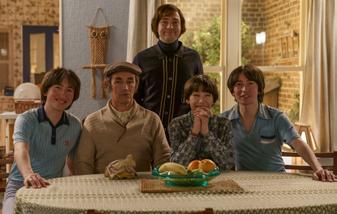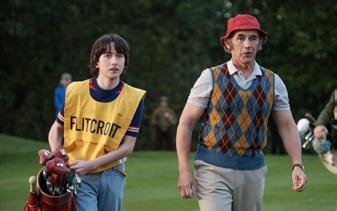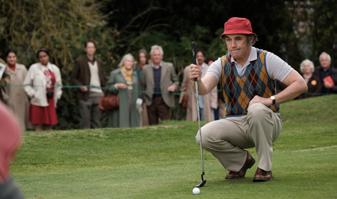
3 minute read
Coming Soon
Dave Silbar
Advertisement
There are loads of memorable scenes in what’s poised to be this summer’s best movie, “The Phantom of the Open.” Before unveiling them, let’s set the stage:
First, the “Phantom” storyline, centered on a golf theme, actually happened. It’s a complete contrast to “Caddyshack” and “Happy Gilmore” mockeries of decades past. Bill Murray and Adam Sandler hardly compare to the poetry-in-motion acting techniques of Mark Rylance and Sally Hawkins – Oscar and Golden Globes award winners, respectively – who star in “Phantom.”
Second, it’s much more than a golf movie. There’s hilarity and hijinks, heartwarming relationships, and reminders of the importance of family values. We don’t hear enough goodness nowadays with news littered with controversy and crime ad nauseum.
It bears worth repeating: “Phantom” is based on a true story, one which even rabid consumers of golf content, as well as golf historians, probably never heard of. Here goes:
Forty-six-year-old Maurice Flitcroft (Rylance) is a crane operator at a shipyard in Barrow-in-Furness, England. This isn’t the educated metropolis of London, folks. It’s tucked into the country’s northwest corner far from the world of pinstripe suits and premier pints in Manchester, 100 miles southeast.
When Maurice gets let go, he recedes home. On the telly is Tom Watson putting to win the 1975 Open Championship.
Upon nary a concerted thought, Maurice gives his blue-collar buddies a doozy, “I’m going to give the British Open a crack.” Really, dude, you’ve never picked up a golf club, hardly project the part and don’t even remotely qualify for country club membership.
“Practice (pause) is the road to perfection,” Maurice calmly projects. And that’s what he does, hitting dribblers off the tee, flinging a club while practicing on the beach, and infrequently driving straight and far, let alone airborne. Where are Butch Harmon and David Ledbetter when you need them?
Maurice improves, but barely enough to even remotely make any taxi squad. Nonetheless, he applies to the Royal and Ancient to play in the 1976 Open Championship qualifier. Because he doesn’t hold a handicap to confirm amateur status, he ticks the professional box and innocently slips past the elitist establishment directly into the tournament.
Before teeing it up, he hams it up with 19-years-young phenom Seve Ballesteros. The generation gap and economic strata deltas are obvious. Is he nervous, the stylish Spaniard inquires? Maurice replies that he figures out “what did I do wrong? How can I do good-er?” Ballesteros salutes, “Until next time.” Maurice closes with “Hasta cajones” that, in plain English, means “Until testicles.”
Scores of seven, 10, and 12 fill Maurice’s card and he finishes in Hall-of-Shame style at 121, miles above par. What is a performance made for headlines is A-OK with Maurice; he’s content simply letting go of limiting beliefs. Says wife Jean (Hawkins): “Whatever happened, no one can say you didn’t try.” Another of Jean’s harmless beauties when told of her husband’s record-worse score, the highest in majors’ history: “Does that mean he’s won?”
More unintentional comedy from the all-too-regular Fitcroft family shines throughout the movie and character development – including spot-on performances of Maurice and Jean’s disco-dancing twins and the Royal and Ancient’s stuffy secretary – is what Academy Award material is made of.
And might we add, for color, that Rylance never played golf before “Phantom.” He took lessons for the role, but purposely couldn’t get so good because Maurice was so bad. Now that’s talent.
So goes the cult-like potential of “Phantom,” a fun-loving and touching movie that cements that golf is for all, no matter the demographic, skill level or (gulp!) score.
“Phantom” opens in theaters nationwide beginning June 3.







